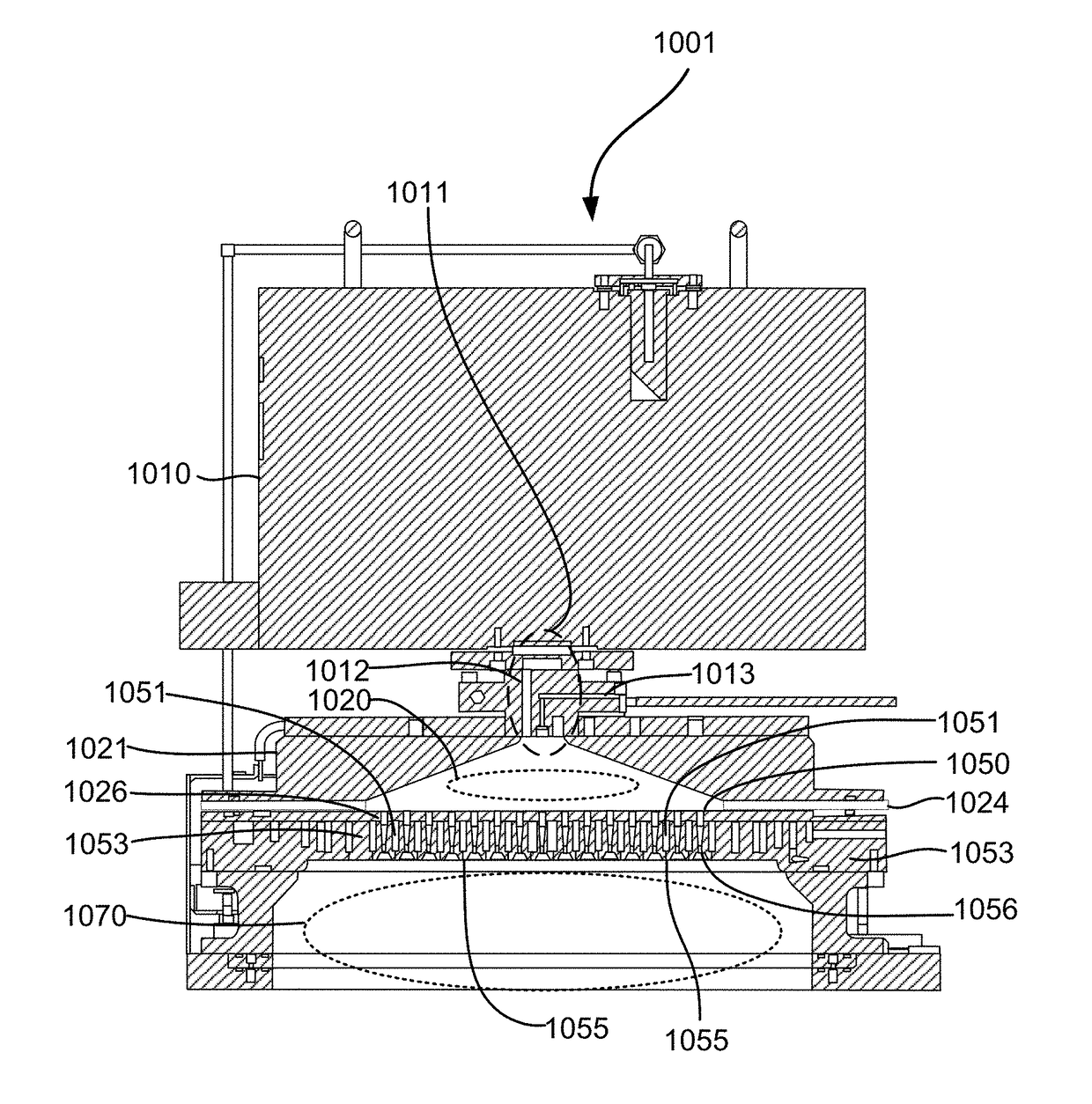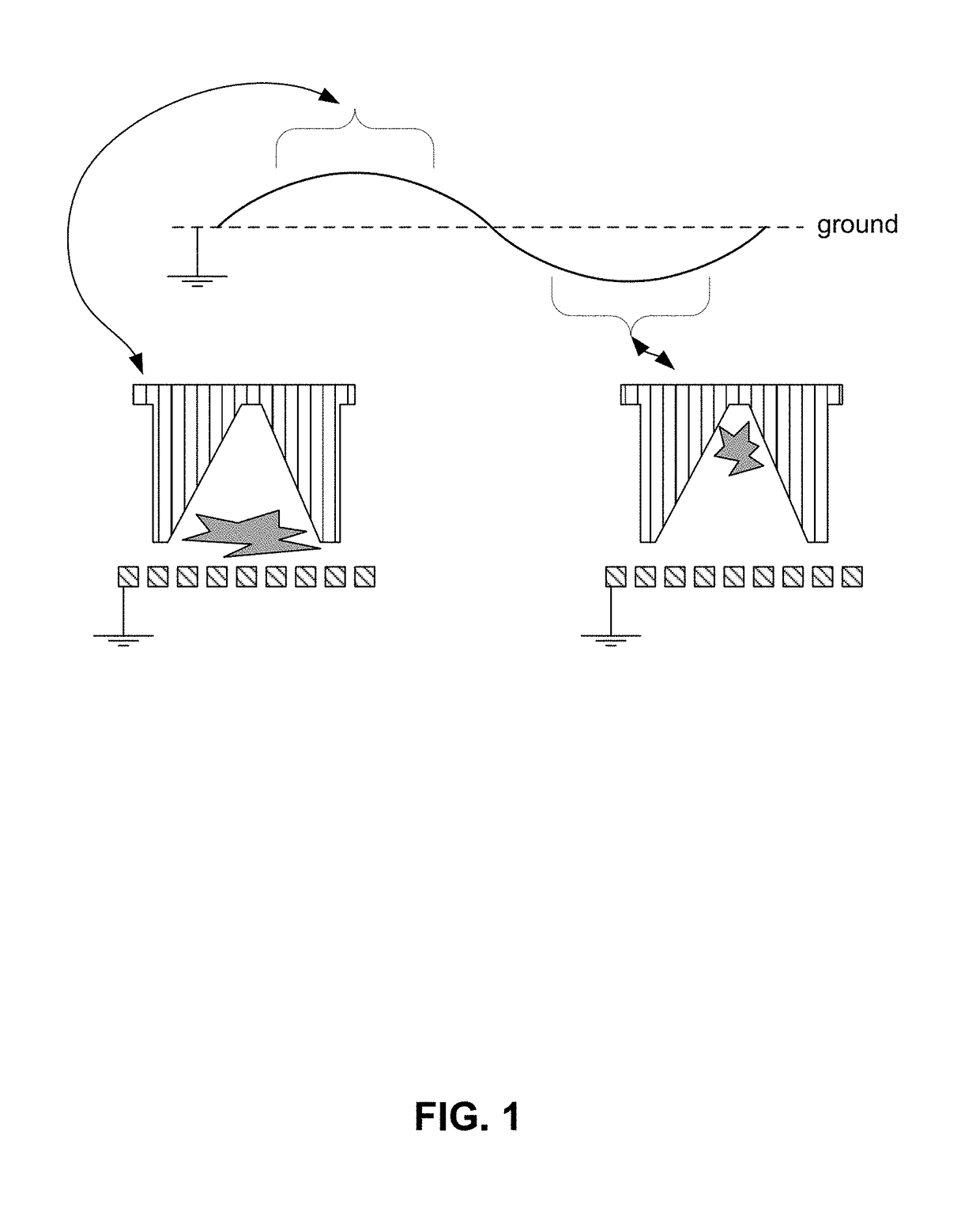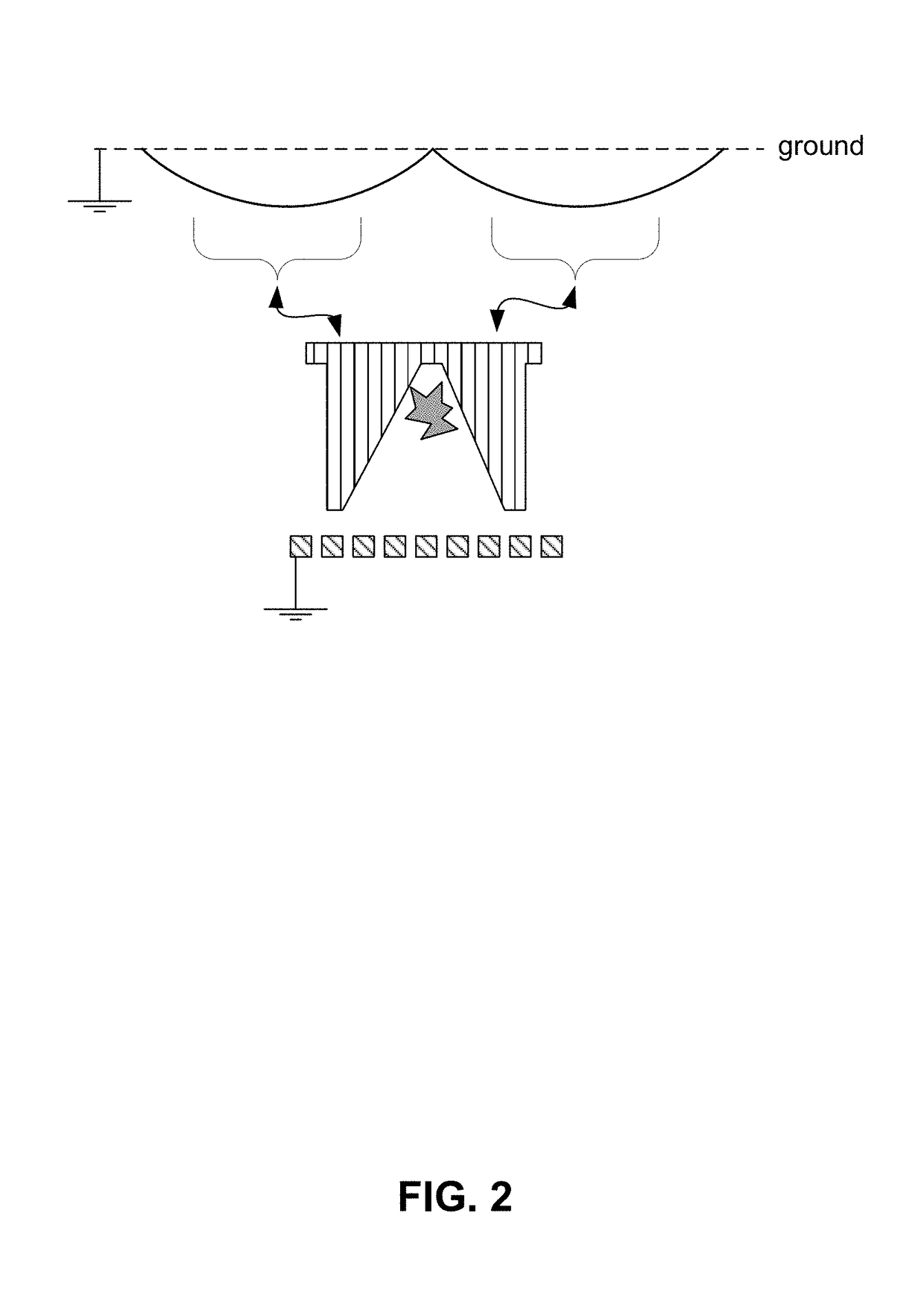Dual discharge modes operation for remote plasma
a plasma and remote technology, applied in the field of semiconductor systems, processes, equipment, etc., can solve the problems of deformation of remaining materials, local plasma damage to the substrate, wet processes may have difficulty in penetrating some constrained, etc., to increase the distance electrons travel, improve the densities of radicals, and improve the effect of semiconductor processing
- Summary
- Abstract
- Description
- Claims
- Application Information
AI Technical Summary
Benefits of technology
Problems solved by technology
Method used
Image
Examples
example 1
[0070]In this example, plasmas were generated in a system, where the total height of conical cavity defined by powered electrode is 10 cm. The diameter at the top of cavity was 0.5 cm, and the diameter at the bottom of cavity was 5 cm. Apertures in electrically grounded electrode have a diameter of 0.08 cm. Both the powered electrode and the electrically grounded electrode were made of nickel-coated aluminum without any dielectric coating. The setup was a direct-current type resistive plasma device, without a phase difference between voltage and current.
[0071]A commercial electronic ballast with a maximum power of 100 W was used to generate a plasma. The commercial electronic ballast in this example was an electronic ballast for household fluorescent lamps. The electronic ballast had an output frequency of 60 to 100 kHz and a 0 to 10 V control for dimming. The voltage was measured with a 100:1 voltage probe (PPE2 KV, LeCroy®), and the current was measured with a current probe (P6021...
example 2
[0073]From the system setup in Example 1, the peak voltages were 707 V and −290 V, as shown in FIG. 9(a). The positive and negative peak currents were 270 mA and −398 mA, respectively, as shown in FIG. 9(b). The voltage waveform was biased around 200 V. Pressure was varied between 1.5 Torr and 27 Torr. The voltage bias decreased with increasing pressure. In the positive half cycle, as the pressure increased, the voltage decreased and the current increased.
[0074]At 1.5 Torr, in the positive half cycle of the period with the powered electrode being an anode, the peak current was about 30 percent lower than that in the negative half cycle when the powered electrode was a cathode, even though the actual applied voltage was about 2.4 times higher. The total charge transferred during positive and negative cycles were 1.69 C and 1.65 C, respectively, which was only different by about 2.5%. The results imply that the discharge phenomena of the positive and negative half cycles may be differ...
example 3
[0076]Time-resolved images from discharges generated in the system in Example 2 are shown in FIG. 10. The exposure time for these images was 0.5 μs. The images from the glow discharge appear different than the images from the hollow cathode discharge. The hollow cathode discharge images were observed to be more intense than the glow discharge images.
[0077]At 8.8 Torr, the glow discharge images show strong emissions in the ten o'clock direction of the grounded electrode. This observation, along with the electrical characteristics at this pressure in Example 2, suggests that a hollow cathode discharge may be present at a pressure of 8.8 Torr with a pD of about 0.7 Torr-cm (D=0.08 cm). As can be seen in the image, this discharge is not uniform, and may not be desirable for semiconductor processing.
[0078]The hollow cathode discharge mode in the negative half cycle was sustained up to 8.8 Torr and became more intense with increasing pressure. Because the diameter of the intense light emi...
PUM
| Property | Measurement | Unit |
|---|---|---|
| frequency | aaaaa | aaaaa |
| pressure | aaaaa | aaaaa |
| pressure | aaaaa | aaaaa |
Abstract
Description
Claims
Application Information
 Login to View More
Login to View More - R&D
- Intellectual Property
- Life Sciences
- Materials
- Tech Scout
- Unparalleled Data Quality
- Higher Quality Content
- 60% Fewer Hallucinations
Browse by: Latest US Patents, China's latest patents, Technical Efficacy Thesaurus, Application Domain, Technology Topic, Popular Technical Reports.
© 2025 PatSnap. All rights reserved.Legal|Privacy policy|Modern Slavery Act Transparency Statement|Sitemap|About US| Contact US: help@patsnap.com



